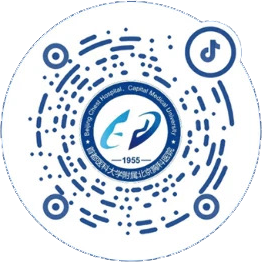2025年
No.8
PubMed
(tuberculosis[Title/Abstract]) OR (lung cancer [Title/ Abstract])
Filters applied: from 2025/8/1 - 2025/8/31.
1. Nat Rev Clin Oncol. 2025 Aug;22(8):592-616. doi: 10.1038/s41571-025-01035-9. Epub 2025 Jun 17.
The next generation of immunotherapies for lung cancers.
Immunotherapies, specifically immune-checkpoint inhibitors (ICIs) targeting PD-(L)1 or CTLA4, have revolutionized the treatment of lung cancer; however, many patients do not have a response to ICIs and most of those with an initial tumour response eventually have disease progression owing to acquired resistance. Over the past few years, numerous therapeutic strategies have been explored to address the problems of intrinsic and acquired resistance to ICIs. In 2024, regulatory approvals of the bispecific PD-1 × VEGF antibody ivonescimab for the treatment of non-small-cell lung cancer in China and the bispecific DLL3 × CD3 T cell engager tarlatamab for patients with small cell lung cancer in the USA provided clinical proof-of-concept for overcoming the challenge of ICI resistance using novel immunotherapeutic agents, thereby increasing enthusiasm for the exploration of next-generation immunotherapies for lung cancer. A large variety of immunotherapies with diverse targets and mechanisms of action are currently being tested in clinical trials involving patients with lung cancer. In this Review, we provide an overview of these emerging immunotherapies in clinical development for non-small-cell lung cancer and/or small cell lung cancer, including novel immune-checkpoint modulators, immune cell engagers, adoptive cell therapies and therapeutic cancer vaccines. We describe the designs of these agents and the mechanisms by which they might overcome resistance to the current generation of ICIs. We also discuss hurdles impeding the clinical translation of each immunotherapeutic modality and potential strategies to address these challenges, using representative examples of agents that have entered the later phases of clinical testing.
PMID: 40528044 [Indexed for MEDLINE]
2. Ann Oncol. 2025 Aug;36(8):920-933. doi: 10.1016/j.annonc.2025.04.003. Epub 2025 Jun 2.
Savolitinib plus osimertinib in epidermal growth factor receptor (EGFR)-mutated advanced non-small cell lung cancer with MET overexpression and/or amplification following disease progression on osimertinib: primary results from the phase II SAVANNAH study.
BACKGROUND: MET-based resistance following osimertinib treatment for epidermal growth factor receptor (EGFR)-mutated advanced non-small cell lung cancer (NSCLC) is common. We report the primary analysis of the phase II SAVANNAH study (NCT03778229) evaluating savolitinib plus osimertinib in this setting.
PATIENTS AND METHODS: Patients had EGFR-mutated, advanced NSCLC with MET overexpression and/or amplification. MET cut-offs were initially MET immunohistochemistry (IHC)3+/≥50% (3+ intensity in ≥50% of tumor cells) and/or FISH5+ (≥5 MET gene copies or MET/chromosome 7 centromere ratio ≥2), and increased to MET IHC3+/≥90% and/or FISH10+ after a preliminary analysis. Patients received oral savolitinib [300 mg twice daily (b.i.d.) or once daily (o.d.), or 600 mg o.d.] plus osimertinib 80 mg o.d., or savolitinib 300 mg b.i.d. plus placebo. A primary endpoint was investigator-assessed objective response rate (ORR) in patients with progression on first-line osimertinib and MET IHC3+/≥90% and/or FISH10+ status receiving savolitinib 300 mg b.i.d. plus osimertinib (primary efficacy population). Safety was analyzed in all patients receiving savolitinib plus osimertinib.
RESULTS: Of the 365 patients treated, 341 received savolitinib plus osimertinib, with 80 of these included in the primary efficacy population. Investigator-assessed confirmed ORR in the primary efficacy population was 56.3% [95% confidence interval (CI) 44.7% to 67.3%]; the median duration of response (mDoR) was 7.1 months (95% CI 5.6-9.6 months); the median progression-free survival (PFS) was 7.4 months (95% CI 5.5-7.6 months). Blinded independent central review was consistent: confirmed ORR 55.0% (95% CI 43.5% to 66.2%); mDoR 9.9 months (95% CI 6.0-13.7 months); median PFS 7.5 months (95% CI 6.4-11.3 months). The most common any grade adverse events in patients receiving savolitinib plus osimertinib were peripheral edema (46.0%), nausea (40.5%), and diarrhea (23.2%).
CONCLUSIONS: Savolitinib 300 mg b.i.d. plus osimertinib demonstrated high, clinically meaningful and durable responses in patients with EGFR-mutated, advanced NSCLC with MET IHC3+/≥90% and/or FISH10+ status following progression on first-line osimertinib. The combination was well tolerated and may provide a new oral targeted treatment approach in this setting.
PMID: 40461383 [Indexed for MEDLINE]
3. Nat Rev Dis Primers. 2025 Aug 21;11(1):60. doi: 10.1038/s41572-025-00642-1.
Lung metastases.
Up to 50% of patients with metastatic cancer develop lung metastases during their disease course. Lung metastases are linked to poor prognosis across various cancer types and might impair the quality of life of patients, causing dyspnoea, cough, haemoptysis and pain, potentially diminishing physical, functional and emotional well-being. Lung metastases arise from a complex interplay of tumour-secreted factors such as VEGF, TGFβ and CCL2, which drive vascular remodelling, immune cell recruitment and extracellular matrix reprogramming. Additionally, tumour-derived exosomes and microparticles contribute to organotropism and immunosuppression by altering the lung microenvironment. The ensemble of these modifications creates a pre-metastatic niche conducive to tumour cell colonization and outgrowth. Lung metastases are primarily diagnosed through imaging; histological confirmation is sometimes required to distinguish them from primary lung cancer. The size and number of lung metastases, timing of primary cancer treatment, histology, and the patient's clinical condition are all considered to determine the most appropriate treatment. When a locoregional approach is not possible, histology-based, molecular-driven systemic therapy is the choice. No systemic treatment is currently available specifically for lung metastases. Advances in understanding the distinct stages of pre-metastatic niche formation and lung metastasis outgrowth might lead to the development of prevention strategies and tailored treatments.
PMID: 40841521 [Indexed for MEDLINE]
4. Cancer Discov. 2025 Aug 4;15(8):1609-1629. doi: 10.1158/2159-8290.CD-24-1704.
Integrating ctDNA Analysis and Radiomics for Dynamic Risk Assessment in Localized Lung Cancer.
The complementarity and clinical utility of combining liquid biopsies and radiomic image analysis has not been demonstrated. ctDNA minimal residual disease after chemoradiotherapy (CRT) for non-small cell lung cancer (NSCLC) is highly prognostic, but on-treatment biomarkers are needed to enable response-adapted therapies. In this study, we analyzed 418 patients with NSCLC undergoing CRT to develop and validate a novel dynamic risk model that accurately predicts ultimate progression-free survival during treatment. We optimize tissue-free variant calling from plasma samples to facilitate ctDNA monitoring and demonstrate the importance of accounting for persistent clonal hematopoiesis variants. We show that mid-CRT ctDNA concentration is prognostic for disease progression and integrate additional pre-CRT risk factors, including radiomics, into a combined model that improves outcome prediction. Our results suggest that tumor features, radiomics, and mid-CRT ctDNA analysis are complementary and can identify patients at high and low risk of progression to potentially enable response-adapted therapies.
SIGNIFICANCE: This study demonstrates that combining tumor features, radiomics, and ctDNA analysis improves outcome prediction in NSCLC treated with CRT therapy. Our integrated model could enable personalized and response-adapted therapies to reduce toxicity and improve outcomes in patients. See related commentary by Anagnostou and Aggarwal, p. 1534.
PMID: 40299851 [Indexed for MEDLINE]
5. J Thorac Oncol. 2025 Aug;20(8):1131-1138. doi: 10.1016/j.jtho.2025.02.023. Epub 2025 Mar 24.
Rapid Intracranial Response with Tarlatamab in Patients with Untreated Brain Metastases from SCLC-A Real-World Case Series: Case Report.
SCLC has the highest propensity for brain metastases among all malignancies. Systemic treatment for SCLC, particularly in the setting of brain metastases, is very limited. Tarlatamab, the CD3/delta-like ligand 3 bispecific T-cell engager, has changed the treatment landscape of relapsed SCLC since its Food and Drug Administration approval in May 2024. Patients with treated and stable brain metastases were included in the phase 1 DeLLphi-300 trial and phase 2 DeLLphi-301 trials of tarlatamab. Nevertheless, it remains unknown if tarlatamab is safe and efficacious in the setting of untreated, active or symptomatic brain metastases. Our case series provides, to our knowledge, the first reported evidence of the safety and efficacy of tarlatamab in patients with untreated brain metastases. In our cohort of 10 patients with relapsed SCLC and untreated brain metastases, including those with symptomatic intracranial disease and one with suspected leptomeningeal disease, clinical response or stability was seen in 90% of patients. We present several cases in which rapid, dramatic radiographic responses and clinical improvement were observed in patients with innumerable growing brain metastases (>20 lesions) who would otherwise require whole brain radiation, suggesting that tarlatamab can control intracranial metastases as monotherapy, potentially sparing or deferring the need for brain radiation.
PMID: 40126456 [Indexed for MEDLINE]
6. Cell Stem Cell. 2025 Aug 7;32(8):1218-1234.e7. doi: 10.1016/j.stem.2025.05.011. Epub 2025 Jun 12.
An organoid co-culture model for probing systemic anti-tumor immunity in lung cancer.
Deciphering interactions between tumor micro- and systemic immune macroenvironments is essential for developing more effective cancer diagnosis and therapeutic strategies. Here, we established a gel-liquid interface (GLI) co-culture model of lung cancer organoids (LCOs) and paired peripheral-blood mononuclear cells (PBMCs), featuring enhanced interactions between immune cells and tumor organoids for optimized simulation of in vivo systemic anti-tumor immunity. By constructing a cohort of lung cancer patients, we demonstrated that the responses of GLI models under αPD1 treatment reflected the immunotherapy outcomes of the corresponding patients precisely. Furthermore, we dissected the various tumor immune processes mediated by PBMC-derived T cells within GLI models through functional multi-omics analyses, along with the characterization of circulating tumor-reactive T cells (GNLY+CD44+CD9+) with effector memory-like phenotypes as a potential indicator of immunotherapy efficacy. Our findings indicate that the GLI co-culture model can be used to develop diagnostic strategies for precision immunotherapies, as well as understanding the underlying mechanisms.
PMID: 40513558 [Indexed for MEDLINE]
7. J Thorac Oncol. 2025 Aug;20(8):1050-1074. doi: 10.1016/j.jtho.2025.02.029. Epub 2025 Mar 6.
Selective Depletion of CCR8+Treg Cells Enhances the Antitumor Immunity of Cytotoxic T Cells in Lung Cancer by Dendritic Cells.
INTRODUCTION: Accumulation of regulatory T (Treg) cells, an immunosuppressive population, limits the efficacy of immunotherapy in NSCLC. C-C motif chemokine receptor 8 (CCR8) is selectively expressed in tumor-infiltrating Treg cells and is, therefore, considered an ideal target.
METHODS: The efficacy and safety of anti-CCR8 monotherapy and its combination with programmed cell death protein-1 (PD1) inhibitor were evaluated in four NSCLC-bearing mice models. To track the dynamic changes in tumor microenvironment, we performed the single-cell RNA sequencing, the single-cell T-cell receptor sequencing analysis, the flow cytometry, the multi-color immunofluorescence, and the Luminex assay on tumors after three, seven, 14, and 21 days of different treatment regimens. Then, in vitro and in vivo experiments were applied to validate our findings and explore molecular mechanisms of the synergistic effects.
RESULTS: Across four NSCLC-bearing mice models, the combination of CCR8 antibody and PD1 inhibitor significantly reduced tumor growth (p < 0.05) without obviousmouse body weight drops and systemic cytokine storm. The anti-CCR8 therapy synergizes with PD1 blockade by remodeling the tumor microenvironment and disrupting CCR8+Treg-C-C motif chemokine ligand 5 (CCL5)+ dendritic cells (DC) interaction. Mechanistically, therapeutic depletion of CCR8+Treg cells combined with PD1 inhibitor extremely increased interleukin-12 secretion by the Janus kinase-signal transducer and activator of transcription (JAK-STAT) pathway activation on CCL5+ DCs, thereby promoting cytotoxic activity of CD8+ T cells. The therapeutic potential of the CCR8 antibody LM-108 in combination with immunotherapy was observed in clinical patients with advanced NSCLC.
CONCLUSION: Overall, CCR8 expression on tumor-infiltrating Treg cells is correlated with immunosuppressive function on DCs and CD8+ T cells, thus impeding antitumor immunity.
PMID: 40056978 [Indexed for MEDLINE]
8. Cancer Commun (Lond). 2025 Aug;45(8):990-1009. doi: 10.1002/cac2.70032. Epub
2025 May 29.
First-line serplulimab plus chemotherapy in extensive-stage small-cell lung cancer: Updated results and biomarker analysis from the ASTRUM-005 randomized clinical trial.
BACKGROUND: The ASTRUM-005 study previously demonstrated a significant overall survival (OS) benefit with serplulimab (a programmed death 1 inhibitor) plus chemotherapy versus chemotherapy alone in previously untreated extensive-stage small-cell lung cancer (ES-SCLC). Here, we report updated efficacy and safety results after an extended median follow-up of 19.8 months, along with the first report on findings from exploratory biomarker analyses.
METHODS: A total of 585 patients were randomized in a 2:1 ratio to receive 4.5 mg/kg serplulimab (n = 389) or placebo (n = 196) intravenously every 3 weeks, together with carboplatin and etoposide. The primary endpoint was OS. In addition, genomic profiling was performed to identify mutated genes, and quantitative serum proteome profiling was conducted to identify differentially expressed proteins (DEPs) between responders and non-responders of serplulimab plus chemotherapy. Regression analysis was subsequently used to construct a protein signature based on the DEPs. The associations between efficacy outcomes (objective response rate [ORR], OS, and progression-free survival [PFS]) and gene mutation status or DEP expression were also examined with regression analysis. Furthermore, the prognostic value of hematological parameters was evaluated.
RESULTS: In the intent-to-treat population, the median OS was 15.8 months in the serplulimab group versus 11.1 months in the placebo group (hazard ratio, 0.62; 95% confidence interval, 0.50-0.76; P < 0.001). We identified 181 DEPs between responders and non-responders in the serplulimab group, from which a 15-protein signature was constructed. In the serplulimab group, patients with a higher 15-protein signature score were associated with significantly longer OS and PFS. Also, patients harboring tumor-suppressor retinoblastoma-1 (RB1) mutations or mutations in Notch pathway members showed improved ORR, OS, or PFS compared with their wild-type counterparts. Baseline neutrophil-to-lymphocyte ratio (NLR) and lactate dehydrogenase (LDH) level were independent prognosticators of patients with ES-SCLC.
CONCLUSIONS: First-line serplulimab provided a sustained clinical benefit over placebo in patients with ES-SCLC. A 15-protein signature and mutations in RB1 or Notch pathway genes may serve as predictive biomarkers for benefits from serplulimab plus chemotherapy, while baseline NLR and LDH were independent prognosticators for ES-SCLC.
PMID: 40440184 [Indexed for MEDLINE]
9. J Clin Oncol. 2025 Aug 20;43(24): e31-e44. doi: 10.1200/JCO-25-01061. Epub 2025 Jul 17.
Therapy for Stage IV Non-Small Cell Lung Cancer with Driver Alterations: ASCO Living Guideline, Version 2025.1.
Living guidelines are developed for selected topic areas with rapidly evolving evidence that drives frequent change in recommended clinical practice. Living guidelines are updated on a regular schedule by a standing expert panel that systematically reviews the health literature on a continuous basis, as described in the ASCO Guidelines Methodology Manual. ASCO Living Guidelines follow the ASCO Conflict of Interest Policy Implementation for Clinical Practice Guidelines. Living Guidelines and updates are not intended to substitute for independent professional judgment of the treating clinician and do not account for individual variation among patients. See appendix for disclaimers and other important information (Appendix 1 and Appendix 2). Updates are published regularly and can be found at https://ascopubs.org/nsclc-da-living-guideline.
PMID: 40674661 [Indexed for MEDLINE]
10. Cancer Res. 2025 Aug 15;85(16):3052-3071. doi: 10.1158/0008-5472.CAN-23-3748.
MYLK-AS1 Enhances Glutamine Metabolism to Promote EGFR Inhibitor Resistance in Non-Small Cell Lung Cancer.
Acquired resistance to EGFR tyrosine kinase inhibitors (TKI) limits the efficacy of molecular targeted therapy in non-small cell lung cancer (NSCLC). Metabolic reprogramming is a hallmark of lung cancer that could contribute to TKI resistance. Through systematic screening and verification, we identified a role for the long noncoding RNA MYLK-AS1 supporting acquired TKI resistance in lung cancer. Elevated expression of MYLK-AS1 correlated with TKI resistance in samples from patients with NSCLC and cell lines. c-Myc mediated transcriptional activation of MYLK-AS1, and m6A modification promoted posttranscriptional upregulation. Mechanistically, MYLK-AS1 bound and directly drove phase separation of interleukin enhancer-binding factor 3 (ILF3), thus interacting with the 3' untranslated region of glutamate dehydrogenase 1 (GLUD1) to posttranscriptionally promote its mRNA stability. MYLK-AS1-mediated GLUD1 upregulation accelerated mitochondrial glutamine catabolism, promoting TKI resistance. Inhibition of GLUD1 with the small-molecule inhibitor R162 in TKI-resistant models suppressed cell proliferation in vitro and tumor growth in vivo. Moreover, knockdown of MYLK-AS1 also enhanced drug sensitivity in TKI-resistant patient-derived xenograft models, suggesting its therapeutic potential. Collectively, these findings offer insights into the regulation of TKI resistance from the perspective of phase separation and metabolism and highlight targeting the MYLK-AS1/ILF3/GLUD1 axis as a potential strategy for improving the efficacy of EGFR TKIs in NSCLC.
SIGNIFICANCE: MYLK-AS1 promotes resistance to EGFR inhibitors by inducing phase separation of ILF3 to stabilize GLUD1 and stimulate glutamine metabolism, highlighting this axis as a putative therapeutic target for overcoming resistance.
PMID: 40366631 [Indexed for MEDLINE]
11. J Thorac Oncol. 2025 Aug;20(8):1075-1085. doi: 10.1016/j.jtho.2025.03.042. Epub 2025 Mar 23.
Anatomic Lung Resection Is Associated with Improved Survival Compared with Wedge Resection for Stage IA (≤2 cm) NSCLC.
INTRODUCTION: Given the uncertain generalizability of recent clinical trial data, a comparative effectiveness analysis evaluating the long-term survival of "real world" patients may clarify the role of lobectomy and sublobar resection (segmentectomy or wedge resection) in the treatment of early stage NSCLC.
METHODS: Adult patients undergoing lung resection for clinical stage IA NSCLC (≤2 cm) between 2012 and 2022 were identified from the Society of Thoracic Surgeons General Thoracic Surgery Database. Long-term vital status was determined by linkage to the National Death Index and Centers for Medicare & Medicaid Services inpatient data. The primary end point was overall survival (OS); secondary end points included lung cancer-specific survival (LCSS). Stabilized inverse probability weighted Cox regression was used to account for selection bias and derive hazard ratios (HRs) with 95% confidence intervals comparing the lobectomy, segmentectomy, and wedge resection cohorts.
RESULTS: Overall, 32,340 patients with stage IA NSCLC (19,778 lobectomies [OS = 71.9% (5 y), 44.8% (10 y)], 4279 segmentectomies [OS = 69.6%, 44.2%], and 8283 wedge resections [OS = 66.3%, 41.4%]) were evaluated. After risk adjustment, lobectomy was associated with improved OS and LCSS compared with sublobar resection (HR [OS] = 0.87 [0.83-0.92]; HR [LCSS] = 0.84 [0.73-0.97]). Both lobectomy (HR [OS] = 0.84 [0.80-0.88]; HR [LCSS] = 0.72 [0.56-0.93]) and segmentectomy (HR [OS] = 0.88 [0.81-0.95]; HR [LCSS] = 0.77 [0.66-0.89]) were associated with improved survival compared with wedge resection. No differences in OS or LCSS were observed between lobectomy and segmentectomy.
CONCLUSION: In routine clinical practice, lobectomy and segmentectomy are associated with improved OS and LCSS compared with wedge resection for stage IA NSCLC (≤2 cm). These findings highlight the potential gap between trial efficacy and real-world effectiveness.
PMID: 40132758 [Indexed for MEDLINE]
12. Nat Rev Clin Oncol. 2025 Aug;22(8):546-565. doi: 10.1038/s41571-025-01029-7. Epub 2025 Jun 9.
Rechallenge with immune-checkpoint inhibitors in patients with advanced-stage lung cancer.
Lung cancer remains the leading cause of cancer-related mortality globally, with many patients diagnosed with advanced-stage disease. Treatment in this setting relies on systemic therapies, including chemotherapy, targeted therapy and immunotherapy. Immune-checkpoint inhibitors (ICIs), which promote or restore antitumour immunity by inhibiting immunosuppressive signalling pathways, are currently the most widely used immunotherapies in these patients. However, immune-related adverse events (irAEs) or disease progression often necessitate discontinuation of these agents, leaving many patients with limited subsequent treatment options. In this scenario, ICI rechallenge has emerged as a potential strategy. Despite this potential, evidence for ICI rechallenge after either disease progression or irAEs in patients with non-small-cell lung cancer is limited and evidence for those with small cell lung cancer seems to be non-existent. In this Review, we provide a comprehensive overview of the available data on ICI rechallenge in the context of both disease progression and irAEs, including a summary of current guidance on clinical management and detailed discussions of safety and efficacy. We also highlight important unanswered questions in an attempt to guide future research in this area.
PMID: 40490476 [Indexed for MEDLINE]
13. J Thorac Oncol. 2025 Aug;20(8):1018-1031. doi: 10.1016/j.jtho.2025.05.004. Epub 2025 May 9.
Emerging Role of Targeted Therapies Combined with Radiotherapy in Inoperable Stages I to III NSCLC: A review from the IASLC ART Subcommittee.
Precision oncology has transformed the management of NSCLC by tailoring treatment to the specific genetic alterations driving oncogenesis. Targeted therapies, such as tyrosine kinase inhibitors, have been found to dramatically improve survival in patients with advanced-stage NSCLC. However, treatment options remain limited for patients with early or locally advanced stage (I-III) NSCLC harboring driver mutations, when the disease is not resectable, or the patient is unsuitable for surgery due to poor fitness or comorbidities. There is growing interest in combining targeted therapies with radiotherapy to optimize treatment outcomes for this patient group. Notably, a progression-free survival benefit has recently been reported with the third-generation tyrosine kinase inhibitor osimertinib in patients with inoperable, EGFR-mutated, stage III NSCLC after chemoradiotherapy. A narrative review of the literature was performed using PubMed, OVID (EMBASE), and ClinicalTrials.gov to identify studies evaluating the combination of targeted therapies and radiotherapy in inoperable stages I to III NSCLC. This review provides a comprehensive overview of the incidence of actionable driver alterations and emerging clinical evidence on combining targeted therapies with thoracic radiotherapy in patients with inoperable stages I to III NSCLC. The toxicity profile of combination treatments, optimal sequencing strategies, ongoing clinical trials, and future perspectives in this field are highlighted. In summary, a clear biological rationale supports the synergistic effects of combining targeted therapies with radiotherapy in the neoadjuvant, concurrent, and adjuvant settings. Advanced clinical trial methodologies may facilitate further research in this area, particularly for rare genetic alterations, to improve outcomes for these patients.
PMID: 40350081 [Indexed for MEDLINE]
14. Signal Transduct Target Ther. 2025 Aug 28;10(1):273. doi: 10.1038/s41392-025-02358-w.
Adjuvant icotinib for resected EGFR-mutated stage II-IIIA non-small-cell lung cancer (ICTAN, GASTO1002): a randomized comparison study.
The efficacy, safety and ideal treatment duration of an adjuvant epidermal growth factor receptor tyrosine kinase inhibitor (EGFR-TKI) for patients with resected EGFR-mutated non-small-cell lung cancer (NSCLC) were not known until 2014, when this study was initiated. In this phase 3 ICTAN trial (GASTO1002, NCT01996098), patients with completely resected, EGFR-mutated, stage II-IIIA NSCLC after adjuvant chemotherapy were assigned in a 1:1:1 ratio to receive icotinib (125 mg, three times daily) for 12 months, to receive icotinib for 6 months, or to undergo observation. The primary endpoint was disease-free survival (DFS). This trial was terminated early. A total of 251 patients were randomized. Adjuvant icotinib for 12 months significantly improved DFS (hazard ratio [HR]: 0.40, 95% confidence interval [CI], 0.27-0.61; P < 0.001) and overall survival (OS; HR: 0.55, 95% CI, 0.32-0.96; P = 0.032) compared with observation. Adjuvant icotinib of 6 months also significantly improved DFS (HR: 0.41, 95% CI, 0.27-0.62; P < 0.001) and OS (HR: 0.56, 95% CI, 0.32-0.98; P = 0.038) compared with observation. Adjuvant icotinib for 12 months did not improve DFS (HR: 0.97; P = 0.89) or OS (HR: 1.00; P = 0.99) compared with 6 months of this drug. Rates of adverse events of grade 3 or higher were 8.3%, 6.0% and 2.4% for the 12-month icotinib, 6-month icotinib, and observation groups, respectively. Adjuvant icotinib for 12 months or 6 months following adjuvant chemotherapy improved DFS and OS compared with observation in patients with resected EGFR-mutated stage II-IIIA NSCLC with a manageable safety profile, supporting it as a potential treatment option.
PMID: 40866342 [Indexed for MEDLINE]
15. J Thorac Oncol. 2025 Aug;20(8):1035-1049. doi: 10.1016/j.jtho.2025.03.045. Epub 2025 Apr 2.
Activating Mutations in the MET Kinase Domain Co-Occur with Other Driver Oncogenes and Mediate Resistance to Targeted Therapy in NSCLC.
INTRODUCTION: MET tyrosine kinase domain (TKD) mutations have recently been characterized as de novo oncogenic drivers in NSCLC. Nevertheless, whether activating MET TKD mutations can confer resistance to targeted therapy in non-MET, oncogene-driven NSCLCs remains unclear.
METHODS: To characterize the genomic features of tumors with MET TKD mutations in oncogene-driven NSCLC, we performed tumor genomic profiling on two different cohorts of patients with NSCLC. Preclinical models of the most frequently observed MET TKD mutations were generated to determine the effect on sensitivity to targeted therapy. Treatment strategies to overcome MET TKD mutation-mediated resistance were further explored.
RESULTS: Genomic profiling of more than 115,000 patients with NSCLC found that activating MET TKD mutations are prevalent in 0.15% of cases, and that about half of them co-occur with another oncogenic driver, with a differential pattern in co-occurring MET TKD mutations according to the oncogenic alteration. A review of eight cases with sequential genomic testing revealed that the MET TKD mutation was acquired after systemic therapy in 88% of cases, with a potential contribution of APOBEC mutagenesis underlying this process. In vitro, MET TKD mutation conferred resistance to targeted therapy in diverse oncogene-driven models, which could be overcome by combinatorial treatment against both the primary oncogene and the MET TKD mutation.
CONCLUSIONS: MET TKD mutation can act as an off-target resistance mechanism in diverse oncogene-driven NSCLC. Combination therapy with an effective MET-targeted therapy can potentially overcome MET TKD mutation-mediated resistance.
PMID: 40185329 [Indexed for MEDLINE]
16. J Thorac Oncol. 2025 Aug;20(8):1086-1097. doi: 10.1016/j.jtho.2025.04.003. Epub 2025 Apr 19.
Surveillance with Fluorine-18 Fluorodeoxyglucose Positron Emission Tomography/Computed Tomography of Patients With Stage I-to-III Lung Cancer After Completion of Curative treatment (SUPE_R): A Randomized Controlled Trial.
INTRODUCTION: Post-treatment surveillance is recommended for NSCLC owing to a high risk of recurrence, but evidence on the optimal surveillance method is lacking. This trial evaluates fluorine-18 fluorodeoxyglucose positron emission tomography/computed tomography ([18F]FDG PET/CT) versus contrast-enhanced CT (ceCT) for surveillance in patients with NSCLC.
METHODS: In this multicenter, randomized controlled trial (SUPE_R, ClinicalTrials.gov NCT03740126), patients with stage IA-to-IIIC NSCLC were randomized one-to-one to standard surveillance (ceCT) or surveillance with [18F]FDG PET/CT after completion of curative treatment. The primary outcome was the proportion of recurrences treated with curative intent. Secondary outcomes included time to recurrence (TTR) and overall survival (OS).
RESULTS: Between February 2019 and February 2022, 750 patients were randomized to PET/CT (n = 373) or CT (n = 377). Recurrences occurred in 164 patients (22%). The proportion of recurrences treated with curative intent was identical in the PET group (42/87) and CT group (37/77), both 48% (p = 0.98). More recurrences were detected through scheduled follow-up in the PET group (90%) than in the CT group (77%; p = 0.02). There were no significant differences in TTR (hazard ratio 1.12, 95% confidence interval 0.82-1.52, p = 0.48) or OS (hazard ratio 0.97, 95% confidence interval 0.66-1.43, p = 0.89) between groups.
CONCLUSIONS: Surveillance with [18F]FDG PET/CT did not improve rates of curatively treated recurrences, TTR, or OS compared with ceCT in patients with NSCLC after curative treatment. These findings do not support the routine use of [18F]FDG PET/CT for post-treatment surveillance in this patient population.
PMID: 40258572 [Indexed for MEDLINE]
17. J Natl Compr Canc Netw. 2025 Aug 6;23(9):371-378. doi: 10.6004/jnccn.2025.7034.
Refining Patient Selection for Prophylactic Cranial Irradiation in Limited-Stage SCLC: A Multicenter Cohort Study.
BACKGROUND: We aimed to evaluate the efficacy of prophylactic cranial irradiation (PCI) in the contemporary management of limited-stage small cell lung cancer (LS-SCLC) and to identify optimal strategies for patient selection.
PATIENTS AND METHODS: This multi-institutional cohort study included patients with LS-SCLC who underwent definitive chemoradiation between 2006 and 2022, all staged using brain MRI and PET. We compared the incidence of brain metastases (BM) and overall survival (OS) between patients who received PCI and those who did not. Additionally, we analyzed the differential effect of PCI across 22 subgroups. BM was classified as either isolated or nonisolated, with cumulative incidence calculated using a competing risk model. Outcomes of salvage treatments for isolated BM were also assessed.
RESULTS: Among the 1,302 study patients, 672 (51.6%) received PCI and 630 (48.4%) did not. During a median follow-up of 30.5 months (range, 4.2-227.2), PCI significantly reduced the cumulative incidence of BM (17.4% vs 27.6% at 2 years; P<.001), primarily by decreasing isolated BM (6.5% vs 16.1% at 2 years; P<.001), but had no significant effect on nonisolated BM. PCI consistently reduced the incidence of isolated BM across all subgroups, which led to improved OS except among patients who achieved complete response (CR) to primary treatment (hazard ratio [HR], 1.03; P=.865). Patients experiencing CR who developed isolated BM and received local salvage treatment achieved an 81.8% remission rate, resulting in OS comparable to those without BM development (HR, 1.10; P=.631). Stereotactic radiosurgery for BM salvage treatment showed superior OS compared with whole-brain radiotherapy or systemic treatment alone.
CONCLUSIONS: PCI did not improve OS in patients achieving CR, who demonstrated excellent outcomes with BM salvage treatment. Our findings suggest that MRI surveillance, combined with effective salvage treatment, may serve as a viable alternative for selected patients with LS-SCLC.
PMID: 40769176 [Indexed for MEDLINE]
18. Nat Cancer. 2025 Aug;6(8):1419-1437. doi: 10.1038/s43018-025-00979-2. Epub 2025 May 22.
Tumor antigens preferentially derive from unmutated genomic sequences in melanoma and non-small cell lung cancer.
Melanoma and non-small cell lung cancer (NSCLC) display exceptionally high mutational burdens. Hence, immune targeting in these cancers has primarily focused on tumor antigens (TAs) predicted to derive from nonsynonymous mutations. Using comprehensive proteogenomic analyses, we identified 589 TAs in cutaneous melanoma (n = 505) and NSCLC (n = 90). Of these, only 1% were derived from mutated sequences, which was explained by a low RNA expression of most nonsynonymous mutations and their localization outside genomic regions proficient for major histocompatibility complex (MHC) class I-associated peptide generation. By contrast, 99% of TAs originated from unmutated genomic sequences specific to cancer (aberrantly expressed tumor-specific antigens (aeTSAs), n = 220), overexpressed in cancer (tumor-associated antigens (TAAs), n = 165) or specific to the cell lineage of origin (lineage-specific antigens (LSAs), n = 198). Expression of aeTSAs was epigenetically regulated, and most were encoded by noncanonical genomic sequences. aeTSAs were shared among tumor samples, were immunogenic and could contribute to the response to immune checkpoint blockade observed in previous studies, supporting their immune targeting across cancers.
PMID: 40405018 [Indexed for MEDLINE]
19. N Engl J Med. 2025 Aug 21;393(8):741-752. doi: 10.1056/NEJMoa2502931. Epub 2025 Jun 2.
Overall Survival with Neoadjuvant Nivolumab plus Chemotherapy in Lung Cancer.
BACKGROUND: Neoadjuvant nivolumab plus chemotherapy significantly improved pathological complete response and event-free survival in patients with resectable non-small-cell lung cancer (NSCLC) in a phase 3 trial. Data are needed on overall survival.
METHODS: In this open-label, phase 3 trial, patients with stage IB to IIIA resectable NSCLC were randomly assigned to receive nivolumab plus chemotherapy or chemotherapy alone for three cycles, followed by surgery. The primary end points were event-free survival and pathological complete response. Here, we report the results of the planned analysis of overall survival.
RESULTS: A total of 358 patients were concurrently assigned to receive nivolumab plus chemotherapy (179 patients) or chemotherapy alone (179 patients). The final analysis of overall survival significantly favored neoadjuvant nivolumab plus chemotherapy over chemotherapy (hazard ratio for death, 0.72; 95% confidence interval [CI], 0.523 to 0.998; P = 0.048). At a median follow-up of 68.4 months, the 5-year overall survival was 65.4% with nivolumab plus chemotherapy and 55.0% with chemotherapy alone, with consistency across most subgroups. In exploratory analyses, the 5-year overall survival in the nivolumab-plus-chemotherapy group was 95.3% (95% CI, 82.7 to 98.8) among the patients with a pathological complete response and 55.7% (95% CI, 46.9 to 63.7) among those without such a response; survival was 75.0% among the patients with presurgery clearance of circulating tumor DNA (ctDNA) and 52.6% among those without such clearance. No new safety signals were observed.
CONCLUSIONS: Three cycles of neoadjuvant nivolumab plus chemotherapy significantly improved overall survival among patients with resectable NSCLC as compared with chemotherapy alone. (Funded by Bristol Myers Squibb; CheckMate 816 ClinicalTrials.gov number, NCT02998528.).
PMID: 40454642 [Indexed for MEDLINE]
20. Adv Mater. 2025 Aug;37(32):e2504050. doi: 10.1002/adma.202504050. Epub 2025 May 22.
Highly Specific Cytokine Receptor-Targeting Chimeras for Targeted Membrane Protein Degradation and Sensitization of Osimertinib in EGFR-Mutated Non-Small-Cell Lung Cancer.
The ability of cytokine receptors to mediate the internalization of targets in lysosomes positions them as specific and effective effectors for protein degradation strategies. However, challenges remain, including the potential unintended activation of cell-proliferation-related cytokine receptors, as well as limitations in programmability and structural flexibility of protein degradators. In this work, a CXCR7-targeting chimera (AP-CRTAC) that functions as a CXCR7 inducer by covalently linking a membrane protein-targeting aptamer with a mutant-CXCL12 mimic peptide is developed. This peptide selectively binds to CXCR7 without activating CXCR4. The AP-CRTAC, which incorporates various aptamer forms from DNA, RNA, or even bispecific aptamers, has shown significant efficacy in degrading one or more proteins or protein mutants on the cell surface. Moreover, the AP-CRTAC constructed with a 2' F-pyrimidine-modified RNA aptamer targeting EGFR effectively degrades various EGFR activating mutations. Notably, AP-CRTAC enhances the sensitivity of the L858R/T790M/C797S triple mutant lung cancer cells, which are resistant to current EGFR-targeted therapies, to the third-generation EGFR inhibitor osimertinib in both in vitro and in vivo settings. This research introduces an engineered CXCR7 inducer with high specificity and programmability for the targeted degradation of cell surface proteins, while minimizing unwanted side effects.
PMID: 40401615 [Indexed for MEDLINE]
21. Cancer Cell. 2025 Aug 11;43(8):1530-1548.e9. doi: 10.1016/j.ccell.2025.06.011. Epub 2025 Jul 10.
KEAP1 and STK11/LKB1 alterations enhance vulnerability to ATR inhibition in KRAS mutant non-small cell lung cancer.
KRAS mutations frequently co-occur with alterations in STK11/LKB1 and/or KEAP1, defining an aggressive subset of lung cancers resistant to immuno- and chemotherapy. While LKB1 loss is associated with vulnerability to DNA damage response-based therapies, the impact of KEAP1 alterations remains unknown. We demonstrate that KEAP1-NRF2 pathway drives a compensatory modulation of ATR-CHK1 signaling, enhancing vulnerability to ATR inhibitors (ATRi), particularly in the setting of increased replication stress associated with LKB1 loss. ATRi shows enhanced anti-tumor activity in LKB1 and/or KEAP1-deficient non-small cell lung cancer (NSCLC) models and synergizes with gemcitabine. ATRi also enhances antitumor immunity and mitigates the immunosuppressed phenotype of LKB1/KEAP1-deficient tumors. In the HUDSON trial, LKB1/KEAP1-deficient NSCLC patients demonstrate enhanced benefits to the ATRi ceralasertib plus durvalumab. These findings suggest that alterations in the KEAP1-NRF2 pathway and/or LKB1 are associated with enhanced sensitivity to ATRi and could serve as biomarkers for predicting response to ATRi combination regimens.
PMID: 40645185 [Indexed for MEDLINE]
22. Nat Med. 2025 Aug;31(8):2788-2796. doi: 10.1038/s41591-025-03746-z. Epub 2025 May 31.
Perioperative durvalumab plus chemotherapy plus new agents for resectable non-small-cell lung cancer: the platform phase 2 NeoCOAST-2 trial.
In the phase II NeoCOAST-2 platform study, 202 patients with untreated, resectable stage IIA-IIIB non-small-cell lung cancer (NSCLC) were randomized to receive neoadjuvant durvalumab plus platinum-doublet chemotherapy with oleclumab, a CD73 inhibitor (Arm 1), or with monalizumab, a NKG2A inhibitor (Arm 2), or neoadjuvant durvalumab plus single-agent platinum chemotherapy with the TROP-2 antibody-drug conjugate (ADC) datopotamab deruxtecan (Arm 4), followed by surgical resection and adjuvant durvalumab with oleclumab or monalizumab (Arms 1 and 2) or durvalumab alone (Arm 4). Primary endpoints were pathological complete response (pCR) rate and safety; secondary endpoints included feasibility of surgery and major pathological response (mPR) rate. In the modified intention-to-treat population (n = 198; Arm 1, n = 74; Arm 2, n = 70; Arm 4, n = 54), pCR rates were 20.3% (15/74; 95% CI, 11.8-31.2), 25.7% (18/70; 95% CI, 16.0-37.6) and 35.2% (19/54; 95% CI, 22.7-49.4), and mPR rates were 41.9% (31/74; 95% CI, 30.5-53.9), 50.0% (35/70; 95% CI, 37.8-62.2) and 63.0% (34/54; 95% CI, 48.7-75.7) in arms 1, 2, and 4, respectively. In the safety population, 69/74 (93.2%), 66/71 (93.0%), and 51/54 (94.4%) patients underwent surgery, respectively. Overall, grade ≥3 treatment-related adverse events occurred in 27/74 (36.5%), 29/71 (40.8%) and 11/54 (20.4%) patients, respectively. In NeoCOAST-2, the first neoadjuvant trial examining an ADC plus chemo-immunotherapy in resectable NSCLC, pCR rates were highest in the datopotamab-deruxtecan-containing arm, warranting further investigation in larger trials of ADCs and checkpoint inhibition in the neoadjuvant setting. ClinicalTrials.gov identifier: NCT05061550.
PMID: 40450142 [Indexed for MEDLINE]
23. JAMA Oncol. 2025 Aug 1;11(8):900-908. doi: 10.1001/jamaoncol.2025.1779.
High-Dose Aumolertinib for Untreated EGFR-Variant Non-Small Cell Lung Cancer with Brain Metastases: The ACHIEVE Phase 2 Nonrandomized Clinical Trial.
Comment on
JAMA Oncol. 2025 Aug 1;11(8):908-909. doi: 10.1001/jamaoncol.2025.1768.
IMPORTANCE: Central nervous system (CNS) metastases remain a significant challenge in the management of EGFR-variant non-small cell lung cancer (NSCLC).
OBJECTIVE: To evaluate the activity and safety of high-dose aumolertinib in patients with untreated EGFR-variant NSCLC and brain metastases.
DESIGN, SETTING, AND PARTICIPANTS: This was a phase 2 nonrandomized clinical trial conducted at 10 centers in China. Patients with untreated EGFR-variant metastatic NSCLC and brain metastases were enrolled between July 6, 2021, and August 31, 2022. The data cutoff date was October 10, 2024.
INTERVENTIONS: Patients received aumolertinib, 165 mg, orally once daily until disease progression or unacceptable toxic effects.
MAIN OUTCOMES AND MEASURES: The primary end point was 12-month progression-free survival (PFS) rate assessed by investigators according to the Response Evaluation Criteria In Solid Tumors (RECIST), version 1.1.
RESULTS: A total of 63 patients (39 female [61.9%]; median age, 60 [range, 47-76] years) were enrolled (full analysis set), and 49 had at least 1 measurable brain lesion (CNS evaluable-for-response set). Median follow-up duration was 28.8 months (95% CI, 27.0-29.8). In the full analysis set, the 12-month PFS rate was 62.1% (95% CI, 48.7-73.0), the median PFS was 20.5 months (95% CI, 12.0-26.9), the 12-month intracranial PFS rate was 76.8% (95% CI, 63.2-85.9), and the median intracranial PFS and overall survival were not reached. Systemic and intracranial objective response rates per RECIST 1.1 were 56 of 63 (88.9% [95% CI, 78.4-95.4]) and 52 of 63 (82.5% [95% CI, 70.9-90.9]) in the full analysis set and 43 of 49 (87.8% [95% CI, 75.2-95.4]) and 42 of 49 (85.7% [95% CI, 72.8-94.1]) in the CNS evaluable-for-response set, respectively. The most common grade 3 or 4 treatment-related adverse event was increased blood creatine phosphokinase (17 participants [27.0%]). No treatment-related deaths occurred. EGFR variant clearance in plasma circulating tumor DNA at day 1 of cycle 2 was independently associated with longer PFS (hazard ratio, 0.14 [95% CI, 0.04-0.47]; P = .001).
CONCLUSIONS AND RELEVANCE: The findings of this nonrandomized clinical trial suggest that high-dose aumolertinib is associated with long-term survival benefit in patients with untreated EGFR-variant NSCLC and brain metastases, with a manageable safety profile.
TRIAL REGISTRATION: ClinicalTrials.gov Identifier: NCT04808752.
PMID: 40569623 [Indexed for MEDLINE]
24. J Thorac Oncol. 2025 Aug;20(8):1098-1107. doi: 10.1016/j.jtho.2025.03.051. Epub 2025 Apr 9.
Neoadjuvant Concurrent Chemo-Immuno-Radiation Therapy Followed by Surgery and Adjuvant Immunotherapy for Resectable Stage III N2 NSCLC: Primary Results From the SQUAT Trial (WJOG 12119L).
INTRODUCTION: Neoadjuvant chemo-immunotherapy is one of the standard treatment options for resectable stage II to III NSCLC. Nevertheless, this treatment yielded insufficient local control in the CheckMate 816 trial. We hypothesized that adding radiotherapy could improve local control, thereby improving survival outcomes.
METHODS: Eligible patients had clinical T1 to T3 or T4 (tumor size) N2 stage IIIA to B NSCLC (American Joint Committee on Cancer version 8), pathologically confirmed as N2 without extranodal invasion. Patients received concurrent chemoradiotherapy (carboplatin [area under the curve = 2] and paclitaxel [40 mg/m2] on days 1, 8, 15, 22, and 29, with 50 Gy radiation over 25 d) and durvalumab (1500 mg) on days 1 and 29, followed by surgical resection within two to six weeks. After surgery, durvalumab adjuvant therapy was administered for up to one year. The primary endpoint was major pathologic response (MPR: ≤10% viable tumor), with secondary endpoints being pathologic complete response, progression-free survival (PFS), overall survival (OS), and safety.
RESULTS: From January 2020 through February 2022, 31 patients were enrolled from 10 Japanese institutions. The MPR rate was 63% (90% confidence interval: 47%-78%), which met the primary endpoint, and the pathologic complete response rate was 23%. At a median follow-up of 28 months, the two-year PFS and OS rates were 43% and 76%, respectively. Grade 3 or 4 adverse events occurred in 48% of cases, including one treatment-related death.
CONCLUSIONS: Compared with recently published results of peri-operative chemo-immunotherapy trials, this treatment regimen had a higher MPR rate. Nevertheless, this benefit did not necessarily translate into improved PFS or OS.
PMID: 40216327 [Indexed for MEDLINE]
25. Lancet. 2025 Aug 9;406(10503):615-626. doi: 10.1016/S0140-6736(25)00866-9.
Adagrasib versus docetaxel in KRAS(G12C)-mutated non-small-cell lung cancer (KRYSTAL-12): a randomised, open-label, phase 3 trial.
BACKGROUND: Adagrasib is a KRASG12C inhibitor that demonstrated promising activity against KRASG12C-mutated advanced non-small-cell lung cancer (NSCLC) in a phase 2 trial. Here we aimed to compare the efficacy and safety of adagrasib versus docetaxel in patients with KRASG12C-mutated advanced NSCLC previously treated with chemotherapy and immunotherapy.
METHODS: KRYSTAL-12 is a randomised, multicentre, open-label, phase 3 trial conducted at 230 centres in 22 countries. Patients with Kirsten rat sarcoma viral oncogene homologue (KRAS)G12C-mutated locally advanced or metastatic NSCLC, who had previously received both platinum-based chemotherapy and anti-programmed cell death protein 1 or anti-programmed death ligand 1 therapy, were randomly allocated in a 2:1 ratio to receive 600 mg adagrasib (twice a day orally) or 75 mg/m2 docetaxel (every 3 weeks intravenously) using a centralised interactive web response system. Randomisation was stratified by region (non-Asia-Pacific vs Asia-Pacific) and previous treatment (sequential vs concurrent chemotherapy or immunotherapy). Treatment continued until disease progression, unacceptable toxicity, investigator or patient decision, or death. The primary endpoint was progression-free survival assessed by blinded independent central review in all randomised patients (intention-to-treat [ITT] population). Safety was assessed in all treated patients. This trial is registered at ClinicalTrials.gov (NCT04685135), and is active but no longer recruiting.
FINDINGS: Between Feb 23, 2021, and Nov 16, 2023, 453 patients were randomly allocated to receive adagrasib (301 [66%]) or docetaxel (152 [34%]). In each group, 298 (99%) patients received adagrasib and 140 (92%) received docetaxel. In the ITT population (median follow-up 7·2 months [95% CI 5·8-8·7]), median progression-free survival was 5·5 months (95% CI 4·5-6·7) with adagrasib and 3·8 months (95% CI 2·7-4·7) with docetaxel (hazard ratio 0·58 [95% CI 0·45-0·76]; p<0·0001). Grade 3 and above treatment-related adverse events occurred in 140 (47%) of 298 patients treated with adagrasib and 64 (46%) of 140 with docetaxel. There were four (1%) treatment-related deaths in the adagrasib group and one (1%) treatment-related death in the docetaxel group.
INTERPRETATION: Adagrasib demonstrated a statistically significant improvement in progression-free survival over docetaxel in patients with previously treated KRASG12C-mutated NSCLC, without new safety signals.
FUNDING: Mirati Therapeutics, a Bristol Myers Squibb company.
PMID: 40783289 [Indexed for MEDLINE]
26. Adv Mater. 2025 Aug;37(34): e2501077. doi: 10.1002/adma.202501077. Epub 2025 Jun 18.
Biomimetic Engineering of Hybrid Radiosensitizers to Boost Radiotherapy against Cancer Metastasis.
Over the past 120 years, significant efforts are dedicated to delivering maximum radiation doses to tumor sites while sparing adjacent normal tissues as much as possible. Despite encouraging progress in the development of heavy metal-based nanoscale radiosensitizers, radiotherapy often fails to fully eradicate hypoxic tumors, leading to local recurrence or even progression to distant metastasis. In this study, a versatile biomimetic hybrid radiosensitizer is engineered by integrating the hypoxia-activated prodrug banoxantrone and CeO2 nanozymes into mesoporous silica-coated Bi2O3 nanoparticles (NPs), followed by camouflage coating with cancer-cell-derived membranes. Compared to naked Bi2O3 NPs and free banoxantrone alone, the radiosensitization efficacy of the biomimetic NPs is substantially enhanced toward both normoxic and hypoxic cancer cells. Moreover, lung metastasis is markedly inhibited by reactive oxygen species-mediated remodeling of the extracellular matrix through the activity of CeO2 nanozymes. As confirmed by in vitro and in vivo results, the biomimetic hybrid radiosensitizer enhances radiotherapy against lung metastasis with fewer side effects. This study provides compelling evidence for the development of next-generation radiosensitizers with optimized functionalities using biomimetic hybrid engineering to finely balance the benefits and risks of radiotherapy.
PMID: 40534277 [Indexed for MEDLINE]
27. ACS Nano. 2025 Sep 9;19(35):31656-31676. doi: 10.1021/acsnano.5c09493. Epub 2025 Aug 28.
Inhalable Fibroin Hybrid Liposomes for the Targeted Treatment of Lung Adenocarcinoma via Autophagy-Enhanced Ferroptosis.
The application of ferroptosis inducer FIN56 to decrease antioxidant levels in lung adenocarcinoma (LUAD) is a promising tumor eradication technique. However, several obstacles reduce the efficacy of ferroptosis therapy including insufficient oxidative stress from monotherapy and restricted drug retention in tumor tissues. To address these challenges, we developed an inhalable hybrid liposome in which FIN56 and piperlongumine (PPL) are coloaded into silk fibroin nanoparticles to overcome the limitation of the poor therapeutic effect of single-drug ferroptosis. Subsequently, lipids containing hyaluronic acid were added to the hybrid liposome to enable it to specifically target the overexpressed CD44 receptors on the surface of LUAD cells and solve the problem of insufficient active targeting of silk fibroin nanoparticles. Compared to conventional intravenous formulations, the as-synthesized formulation FP@SLCDH increased pulmonary accumulation by 13.6-fold and lipid peroxidation products by 2.14-fold. FIN56 prompts tumor-specific ferroptosis by inhibiting glutathione peroxidase 4 (GPX4) and glutathione (GSH), whereas PPL further augments this effect by increasing intracellular reactive oxygen species levels and facilitating ferritin degradation to release Fe ions from ferritin. The role of autophagy in promoting ferroptosis and therapeutic efficacy was validated in an orthotopic LUAD tumor model. The real-time tracking of targeted retention of FP@SLCDH in LUAD cells is also possible using an aggregation-induced emission probe, which is facilitated as a "double-lock logic gate fluorescence probe". This probe emits fluorescence signals only after entering cancer cells and arriving at the mitochondria. To summarize, our proposed hybrid liposomes represent a significantly enhanced pulmonary strategy for LUAD therapy.
PMID: 40878028 [Indexed for MEDLINE]
28. Nat Med. 2025 Aug;31(8):2755-2767. doi: 10.1038/s41591-025-03732-5. Epub 2025 May 28.
Molecular determinants of sotorasib clinical efficacy in KRAS(G12C)-mutated non-small-cell lung cancer.
Molecular determinants of KRAS(G12C) inhibitor efficacy in KRASG12C-mutated non-small-cell lung cancer (NSCLC) remain poorly characterized. Here we report one of the largest integrated analyses to date of sotorasib clinical efficacy biomarkers from the phase 2 CodeBreaK 100 and phase 3 CodeBreaK 200 studies. We reveal differential sotorasib activity and relative benefit compared to docetaxel across KRASG12C-mutated NSCLC co-mutational subsets and transcriptional subtypes. We also identify low expression of TTF1 and KEAP1 co-mutations/NRF2 activation as major determinants of sotorasib anti-tumor efficacy and adverse prognostic features. Exploratory analyses highlight potential tumor cell-extrinsic contributors to sotorasib anti-tumor activity and suggest that early on-treatment clearance of KRASG12C- circulating tumor DNA may refine clinical response prediction algorithms. Our findings advance precision medicine for patients with KRASG12C-mutated NSCLC and establish a framework for patient stratification and selection for treatment intensification with rationally applied therapeutic combinations.
PMID: 40437272 [Indexed for MEDLINE]
29. Lancet Respir Med. 2025 Aug;13(8):677-686. doi: 10.1016/S2213-2600(25)00121-3. Epub 2025 Jun 20.
Efficacy and safety of limertinib versus gefitinib as first-line treatment for locally advanced or metastatic non-small-cell lung cancer with EGFR-sensitising mutation: a randomised, double-blind, double-dummy, phase 3 trial.
BACKGROUND: Limertinib is a new third-generation epidermal growth factor receptor (EGFR) tyrosine kinase inhibitor. This study aimed to prospectively assess the efficacy and safety of limertinib versus gefitinib as a first-line treatment for locally advanced or metastatic non-small-cell lung cancer (NSCLC) with EGFR-sensitising mutation.
METHODS: This multicentre, randomised, double-blind, double-dummy, phase 3 trial was done at 56 hospitals in China. Eligible patients were aged ≥18 years with locally advanced or metastatic NSCLC with EGFR-sensitising mutation (exon 19 deletion or exon 21 L858R mutation) detected in tumour tissue samples using the Cobas EGFR Mutation Test at a central laboratory. Patients were randomly assigned (1:1) to receive oral limertinib 80 mg twice a day and gefitinib-matching placebo 250 mg once a day or oral gefitinib 250 mg once a day plus limertinib-matching placebo 80 mg twice a day in 21-day cycles, until disease progression or other discontinuation criteria was met. Random assignment was stratified according to EGFR mutation type (exon 19 deletion or exon 21 L858R mutation) and CNS metastasis (yes or no) using permuted blocks (block size four) through an interactive web-based response system. The primary endpoint was independent central review (ICR)-assessed progression-free survival. All enrolled patients who received at least one dose of study treatment were included in the full analysis set for efficacy analysis. All enrolled patients who received at least one dose of study treatment and one safety assessment were included in the safety set. This study is registered with ClinicalTrials.gov, NCT04143607, and follow-up is ongoing.
FINDINGS: Between June 30, 2021, and Sept 22, 2022, 337 patients were enrolled and 168 were randomly assigned to the limertinib group and 169 to the gefitinib group. Patients' median age was 63 years (34-82). 214 (64%) of 337 patients were female and 123 (36%) were male. The median masked ICR-assessed progression-free survival was 20·7 months (95% CI 15·2-22·1) in the limertinib group and 9·7 months (95% CI 8·3-11·1) in the gefitinib group (hazard ratio [HR] 0·44 [95% CI 0·34-0·58]; p<0·0001). Treatment-related adverse events of grade 3 or worse occurred in 42 (25%) of 168 patients in the limertinib group and 42 (25%) of 169 patients in the gefitinib group. Treatment-related serious adverse events occurred in nine (5%) patients and 17 (10%) patients in each group, respectively. Six (4%) patients in the limertinib group died due to adverse events, all of which were considered possibly unrelated to the study drug by investigators. In the gefitinib group, seven (4%) patients died due to adverse events, with three (2%) of those deaths judged as possibly related to the study drug by investigators. Three treatment-related deaths in the gefitinib group were recorded (one case related to pneumonia and two with cause of death unknown).
INTERPRETATION: Limertinib showed superior efficacy compared with gefitinib and a manageable safety profile for locally advanced or metastatic NSCLC patients with EGFR-sensitising mutation and should be considered as another first-line treatment option for this patient population.
FUNDING: Jiangsu Aosaikang Pharmaceutical.
TRANSLATION: For the Chinese translation of the abstract see Supplementary Materials section.
PMID: 40550238 [Indexed for MEDLINE]
30. Nat Med. 2025 Aug;31(8):2768-2777. doi: 10.1038/s41591-025-03688-6. Epub 2025 Apr 29.
D3S-001 in advanced solid tumors with KRAS(G12C) mutations: a phase 1 trial.
D3S-001 is a next-generation KRAS-G12C inhibitor (G12Ci) designed to enhance target engagement efficiency and overcome growth factor-induced nucleotide exchange. D3S-001 was evaluated in a phase 1a dose-escalation study in patients with advanced solid tumors harboring KRASG12C mutation (N = 42) and a phase 1b expansion cohort of patients with non-small-cell lung cancer (NSCLC) whose disease progressed after prior G12Ci therapy (N = 20). The primary endpoints were safety and determination of the maximum tolerated dose. Secondary endpoints included pharmacokinetics, confirmed objective response rate (ORR) and disease control rate. D3S-001 demonstrated dose-dependent pharmacokinetics and no dose-limiting toxicities, and the maximum tolerated dose was not reached. Grade 3 treatment-related adverse events were reported in seven patients (16.7%) in the G12Ci-naive dose-escalation cohort and two patients (10.0%) in the G12Ci-pretreated NSCLC expansion cohort. There were no grade 4 or 5 treatment-related adverse events. D3S-001 600 mg was selected as the dose for further investigation based on pharmacokinetics. Confirmed ORR in the G12Ci-naive population was 73.5% overall (25 of 34), and 66.7% (14 of 21), 88.9% (8 of 9) and 75.0% (3 of 4) in patients with NSCLC, colorectal cancer and pancreatic ductal adenocarcinoma, respectively. Among patients with G12Ci-pretreated NSCLC, ORR was 30.0% (6 of 20) and disease control rate was 80.0% (16 of 20). This study demonstrates the safety and tolerability of D3S-001 monotherapy with promising antitumor activity. The phase 1b expansion phase is ongoing. ClinicalTrials.gov identifier: NCT05410145.
PMID: 40301557 [Indexed for MEDLINE]
31. Nature. 2025 Aug;644(8075):133-144. doi: 10.1038/s41586-025-09219-0. Epub 2025 Jul 2.
The mutagenic forces shaping the genomes of lung cancer in never smokers.
Lung cancer in never smokers (LCINS) accounts for around 25% of all lung cancers1,2 and has been associated with exposure to second-hand tobacco smoke and air pollution in observational studies3-5. Here we use data from the Sherlock-Lung study to evaluate mutagenic exposures in LCINS by examining the cancer genomes of 871 treatment-naive individuals with lung cancer who had never smoked, from 28 geographical locations. KRAS mutations were 3.8 times more common in adenocarcinomas of never smokers from North America and Europe than in those from East Asia, whereas a higher prevalence of EGFR and TP53 mutations was observed in adenocarcinomas of never smokers from East Asia. Signature SBS40a, with unknown cause6, contributed the largest proportion of single base substitutions in adenocarcinomas, and was enriched in cases with EGFR mutations. Signature SBS22a, which is associated with exposure to aristolochic acid7,8, was observed almost exclusively in patients from Taiwan. Exposure to secondhand smoke was not associated with individual driver mutations or mutational signatures. By contrast, patients from regions with high levels of air pollution were more likely to have TP53 mutations and shorter telomeres. They also exhibited an increase in most types of mutations, including a 3.9-fold increase in signature SBS4, which has previously been linked with tobacco smoking9, and a 76% increase in the clock-like10 signature SBS5. A positive dose-response effect was observed with air-pollution levels, correlating with both a decrease in telomere length and an increase in somatic mutations, mainly attributed to signatures SBS4 and SBS5. Our results elucidate the diversity of mutational processes shaping the genomic landscape of lung cancer in never smokers.
PMID: 40604281 [Indexed for MEDLINE]
32. Adv Mater. 2025 Aug;37(34): e2501435. doi: 10.1002/adma.202501435. Epub 2025 Jun 11.
A PROTAC-Based Cuproptosis Sensitizer in Lung Cancer Therapy.
As an autonomous form of regulated cell death, cuproptosis depends on copper (Cu) and mitochondrial metabolism. However, the principle metabolic pathway known as glycolysis (Warburg effect) and high glutathione (GSH) levels of tumor cells inevitably lead to suboptimal efficacy in cuproptosis. Hence, depleting the endogenous GSH within tumors and shifting from glycolysis to mitochondrial respiration are crucial factors for augmenting cuproptosis. In this study, a proteolysis targeting chimera (PROTAC)-based cuproptosis sensitizer (CuS-MD@CS) is innovatively constructed, which not only can induce cuproptosis and reactive oxygen species production via copper ions but also can regulate the expression of p53 protein via PROTACs through the ubiquitin-proteasome system in tumor cells, thus achieving endogenous GSH depletion and a shift from glycolysis to mitochondrial respiration, making cancer cells more sensitive to cuproptosis. Importantly, in vitro and in vivo experiments have verified that CuS-MD@CS effectively targets A549 cells and suppresses tumor growth through cuproptosis and apoptosis, exhibiting promising therapeutic responses. The novel PROTAC-based cuproptosis sensitizer CuS-MD@CS provides a new strategy for sensitizing cuproptosis and offers new hope for effective lung cancer treatment.
PMID: 40495637 [Indexed for MEDLINE]
33. J Thorac Oncol. 2025 Aug;20(8):1108-1119. doi: 10.1016/j.jtho.2025.04.007. Epub 2025 Apr 19.
High-Dose Versus Standard-Dose Twice-Daily Thoracic Radiotherapy in Limited-Stage SCLC: Final Survival Data, Long-Term Toxicity, and Relapse Patterns in a Randomized, Open-Label, Phase II Trial.
INTRODUCTION: Chemoradiotherapy is standard treatment for limited-stage SCLC. However, most patients relapse and there is a need for better treatment. We investigated whether twice-daily thoracic radiotherapy (TRT) of 60 Gy/40 fractions improves survival compared with the established schedule of 45 Gy/30 fractions. Here, we report final survival data and long-term toxicity.
METHODS: Randomized, open-label, phase II trial. Eligible patients had performance status of 0 to 2, were above or equal to 18 years of age, underwent 18F-fluorodeoxyglucose positron emission tomography computed tomography and brain magnetic resonance imaging for staging, and were randomized 1:1 to TRT of 60 or 45 Gy. Patients were to receive four courses of platinum and etoposide chemotherapy, and responders were offered prophylactic cranial irradiation.
RESULTS: A total of 170 patients were randomized (60 Gy: n = 89, 45 Gy: n = 81). Median age was 65 years, 31% above or equal to 70 years, 57% women, 89% had performance status of 0 to 1, 83% stage III disease, median planning target volume was 305 cm3, and 67% were treated with three-dimensional conformal radiotherapy. Median overall survival in the 60 Gy group was significantly longer (43.5 versus 22.5 mo, hazard ratio 0.68, 95% confidence interval 0.48-0.98, p = 0.037). The 60 Gy group did not experience more acute grades 3 to 4 esophagitis (60 Gy: 21%, 45 Gy: 18%, p = 0.83) or pneumonitis (60 Gy: 3%, 45 Gy: 0%, p = 0.39). Two patients, both in the 60 Gy group, developed esophageal strictures, whereas 11 patients (60 Gy: n = 5, 45 Gy: n = 6) developed severe long-term eating and swallowing dysfunction.
CONCLUSION: Twice-daily TRT of 60 Gy/40 fractions was well tolerated and prolonged survival compared with 45 Gy/30 fractions in patients with limited-stage SCLC. This trial is registered at ClinicalTrials.gov: NCT02041845.
PMID: 40258573 [Indexed for MEDLINE]
34. Nat Nanotechnol. 2025 Aug;20(8):1119-1130. doi: 10.1038/s41565-025-01922-3. Epub 2025 May 19.
Tumour-derived microparticles obtained through microwave irradiation induce immunogenic cell death in lung adenocarcinoma.
Tumour-derived microparticles (TMPs), extracellular vesicles traditionally obtained upon ultraviolet (UV) radiation of tumour cells, hold promise in tumour immunotherapies and vaccines and have demonstrated potential as drug delivery systems for tumour treatment. However, concerns remain regarding the limited efficacy and safety of UV-derived TMPs. Here we introduce a microwave (MW)-assisted method for preparing TMPs, termed MW-TMPs. Brief exposure of tumour cells to short-wavelength MW radiation promotes the release of TMPs showing superior in vivo antitumour activity and safety compared with UV-TMPs. MW-TMPs induce immunogenic cell death and reprogramme suppressive tumour immune microenvironments in different lung tumour models, enabling dual targeting of tumour cells by natural killer and T cells. We show that they can efficiently deliver methotrexate to tumours, synergistically boosting the efficacy of PD-L1 blockade. This MW-TMP development strategy is simpler, more efficient and safer than traditional UV-TMP methods.
PMID: 40389640 [Indexed for MEDLINE]
35. Nat Med. 2025 Aug;31(8):2797-2805. doi: 10.1038/s41591-025-03744-1. Epub 2025 May 30.
Patritumab deruxtecan in leptomeningeal metastatic disease of solid tumors: the phase 2 TUXEDO-3 trial.
Leptomeningeal metastatic disease (LMD) is a severe complication of solid cancers with poor outcomes and limited treatment options. The antibody-drug conjugate patritumab deruxtecan (HER3-DXd) demonstrated efficacy in breast and lung cancers, and HER3 is involved in central nervous system metastases, particularly in parenchymal colonization. In this study, we investigated HER3-DXd efficacy and safety in patients with LMD in cohort 3 of the TUXEDO-3 phase 2 trial. Key eligibility criteria included age ≥18 years, treatment-naive LMD or LMD progressing after radiotherapy from any solid tumor and Eastern Cooperative Oncology Group performance status of 0-2. Between January and July 2024, 20 evaluable patients (nine with type I and 11 with type II LMD) were accrued and received HER3-DXd 5.6 mg kg-1 intravenously every 3 weeks. Main primary tumor types included breast (60%) and lung (30%) cancers. Median follow-up time was 5.4 months. The primary endpoint was met with 65.0% patients alive after 3 months. The Kaplan-Meier-estimated 3-month and 6-month overall survival rates were 69.6% and 58.9%, respectively. Overall response rate was 11.1% for intracranial, 30.8% for extracranial and 26.3% for overall lesions. Clinical benefit rate was 50.0% for intracranial, 38.5% for extracranial and 47.4% for overall lesions. Neurological symptoms and quality of life remained stable or improved during study treatment. No new neurological adverse events were observed. The most common adverse events of any grade were anemia (nine (40.9%) patients, one (4.5%) grade ≥3), nausea (seven (31.8%) patients, no grade ≥3), neutropenia (six (27.3%) patients, three (13.6%) grade ≥3), diarrhea (six (27.3%) patients, one (4.5%) grade ≥3), asthenia (six (27.3%) patients, no grade ≥3) and thrombocytopenia and headache (five (22.7%) patients, one (4.5%) grade ≥3 each). TUXEDO-3 showed clinically relevant HER3-DXd activity in patients with LMD. ClinicalTrials.gov identifier: NCT05865990.
PMID: 40447851 [Indexed for MEDLINE]
36. Nat Genet. 2025 Aug;57(8):1922-1934. doi: 10.1038/s41588-025-02285-0. Epub 2025 Aug 7.
Analysis of individual patient pathway coordination in a cross-species single-cell kidney atlas.
The use of single-cell RNA sequencing in clinical and translational research is limited by the challenge of identifying cell-type-specific, targetable molecular changes in individual patients and cross-species differences. Here we created an integrated single-cell kidney atlas including over 1 million cells from 140 samples, defining more than 70 conserved cell states in human and rodent models. We developed CellSpectra, a computational tool that quantifies changes in gene expression coordination across cellular functions, which we applied to kidney and lung cancer data. This tool powers our patient-level single-cell functional profiling report, which highlights cell-type-specific changes in the coordination of pathway gene expression in individuals. Our cross-species atlas facilitates the selection of a rodent model that closely reflects the cellular and pathway-level signatures observed in patient samples, advancing the application of single-cell methodologies in clinical precision medicine. Finally, using experimental models, we demonstrate how our informatics approach can be applied for the potential selection of suitable therapeutics.
PMID: 40775269 [Indexed for MEDLINE]
下一篇: No.7




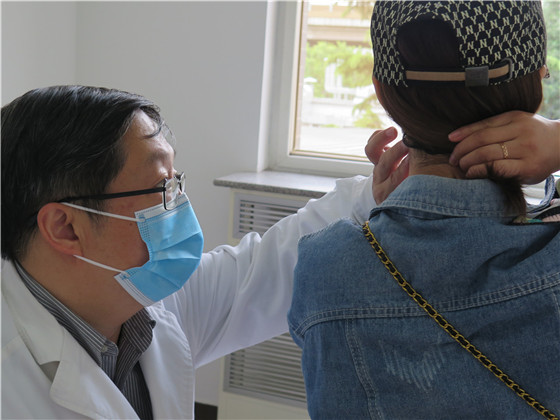
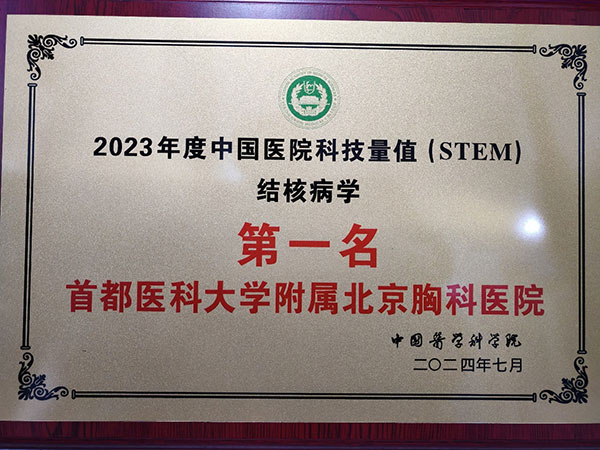
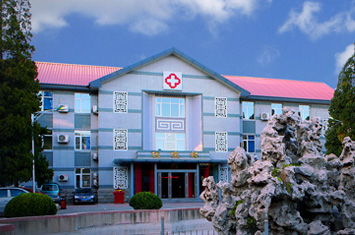
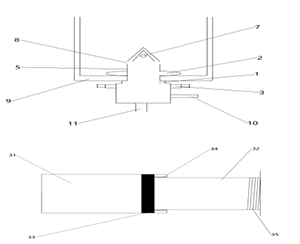

.jpg)










